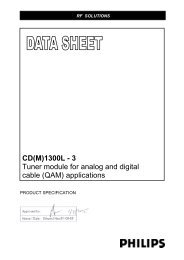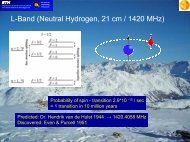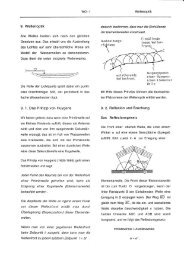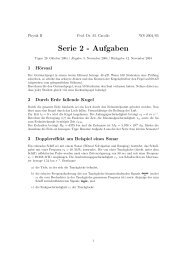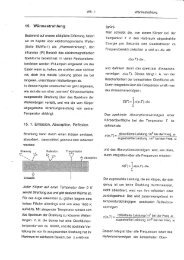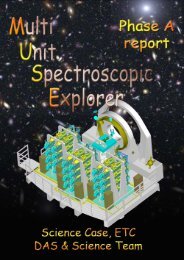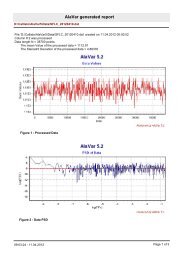Chapter 3: THE FRIEDMANN MODELS
Chapter 3: THE FRIEDMANN MODELS
Chapter 3: THE FRIEDMANN MODELS
You also want an ePaper? Increase the reach of your titles
YUMPU automatically turns print PDFs into web optimized ePapers that Google loves.
1<br />
(3.53) z)<br />
= { q z + ( q −1)(<br />
1+<br />
2q<br />
z −1}<br />
Z q<br />
(<br />
2<br />
0 0<br />
0<br />
q0<br />
(1 + z)<br />
This reduces in three simple cases to:<br />
q<br />
0<br />
= 0<br />
k<br />
= −1<br />
Z<br />
q<br />
z(1<br />
+ 0.5z)<br />
( z)<br />
=<br />
(1 + z)<br />
(3.54)<br />
q<br />
q<br />
0<br />
0<br />
= 0.5<br />
= 1<br />
k = 0<br />
k = 1<br />
⎛<br />
Z<br />
q<br />
( z)<br />
= 2⎜1<br />
−<br />
⎝<br />
z<br />
Z<br />
q<br />
( z)<br />
=<br />
1+<br />
z<br />
1 ⎞<br />
⎟<br />
1+<br />
z ⎠<br />
These expressions are very useful. The q 0 = 1 case is noteworthy primarily because it<br />
produces a luminosity distance D L (see section 2.26) that is proportional to z. Thus the<br />
magnitude-redshift relation (the classical Hubble diagram) is a straight line in this<br />
cosmology.<br />
It should be stressed that all of the foregoing relations apply only to a pressureless<br />
matter-dominated Universe, like ours at the present epoch, because they were based<br />
on the particular form of R(t) that is produced in such a model.<br />
The various relations above are sufficient to derive a number of interesting quantities.<br />
For instance, one often encounters the comoving volume element, dV c /dz. This<br />
describes the incremental increase in comoving volume (i.e. in which galaxies have<br />
constant number density assuming that their numbers are conserved) with redshift and<br />
is required for instance when calculating the expected number of faint galaxies seen<br />
within a survey of a given surface area on the sky since dN/dz is proportional to<br />
dV c /dz.<br />
Consider a cone of solid angle dΞ. If this projects to a physical area A on a sphere of<br />
constant radius at a redshift z, then<br />
(3.55)<br />
dV<br />
dz<br />
dV<br />
dz<br />
c<br />
c<br />
2 dw<br />
2<br />
= A( 1+<br />
z)<br />
with A = dΞDθ<br />
dz<br />
⎛<br />
=<br />
⎜<br />
⎝<br />
c<br />
H<br />
0<br />
⎞<br />
⎟<br />
⎠<br />
3<br />
Z<br />
(1 + z)<br />
2<br />
q<br />
( z)<br />
dΞ<br />
1+ Ω z<br />
0<br />
3.7 The interrelation between the curvature, the density and the expansion<br />
rate<br />
Remember that all solutions to the Friedmann equation must have the same<br />
relationship (3.17) between the curvature and the expansion rate and the density:




